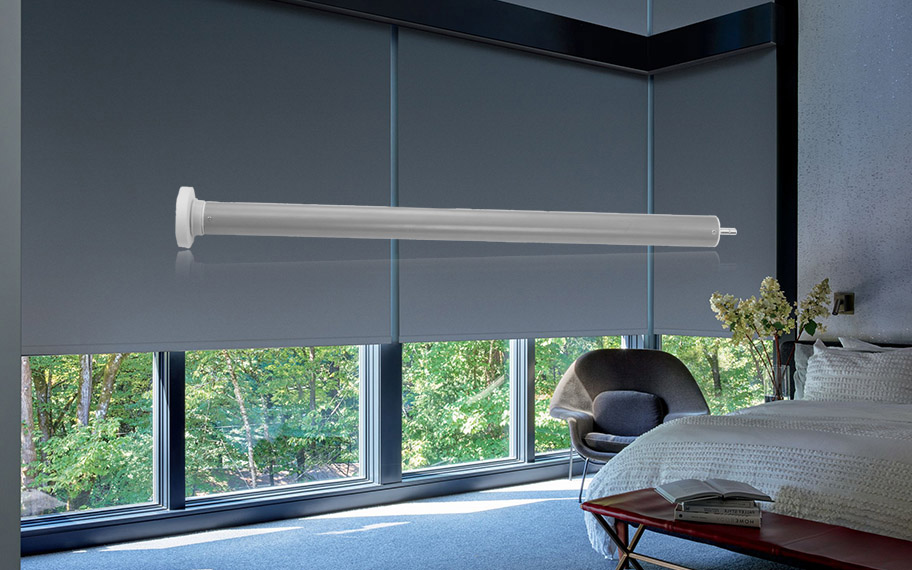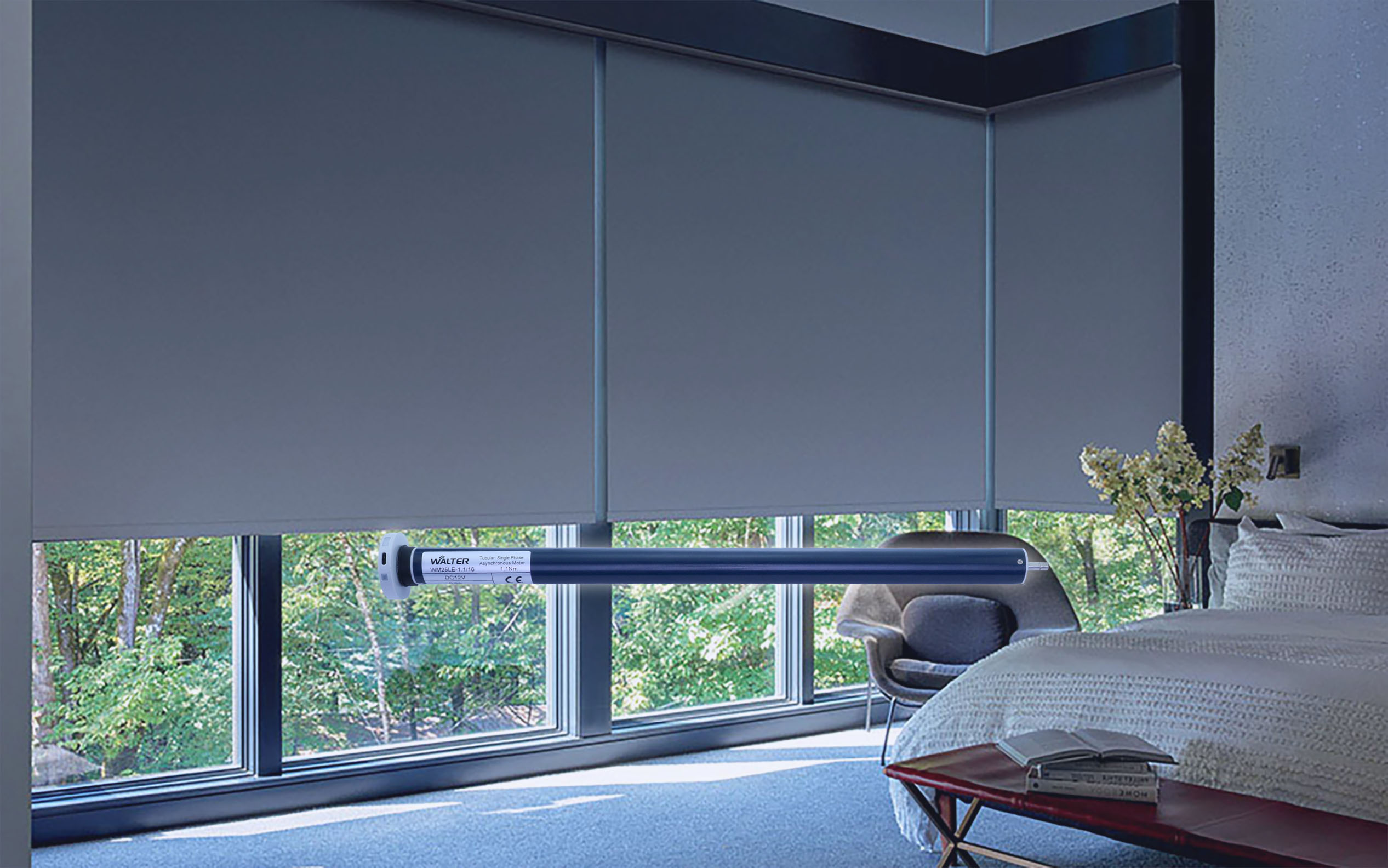How roller blinds Motor Works?
Roller blinds motors are designed to automate the operation of roller blinds, making it easier to control the amount of light, privacy, and airflow in a room. These motors can be controlled by a simple switch, a remote control, or even a smart device, offering both convenience and efficiency. Let’s break down the mechanics of how these motors work and how they provide enhanced functionality to roller blinds.
1. Components of a Roller Blinds Motor System
A typical roller blinds motor system consists of several key components:
- Motor: The main device responsible for generating the movement required to raise or lower the roller blind.
- Roller Tube: This is the cylindrical tube that holds the fabric of the blind and rotates to roll it up or down.
- Gearbox: Connected to the motor, the gearbox reduces the speed of the motor’s rotation while increasing torque. This is important for the smooth operation of the blinds.
- Limit Switches: These are used to set the upper and lower limits of the blind’s movement. They ensure the blinds stop at the correct positions (fully opened or closed).
- Power Supply: Roller blinds motors are powered by either AC (Alternating Current) or DC (Direct Current) electricity, depending on the type of motor.
- Control System: This can include a wall switch, remote control, or a smart system (such as a mobile app or home automation system) for controlling the blind’s movement.
2. The Working Process
Here’s how a roller blinds motor operates step-by-step:
- Powering the Motor: When you press a button on a wall switch, remote control, or app, the control system sends a signal to the motor. This turns the motor on, allowing it to rotate.
- Motor Rotation: The electric motor inside the system begins to rotate. The motor’s rotor spins when it receives electrical power, creating rotational force (torque).
- Gearbox Action: The motor’s rotational force is transferred to a gearbox. The gearbox’s job is to slow down the motor’s speed and increase the torque. This helps to generate the necessary force to move the roller tube that holds the fabric of the blind.
- Roller Tube Movement: The gearbox is connected to a drive shaft, which is in turn connected to the roller tube. As the motor spins, the drive shaft rotates the roller tube, which winds or unwinds the fabric.
- Raising or Lowering the Blinds: If you want to lower the blinds, the motor will rotate in one direction, unrolling the fabric. Conversely, if you want to raise the blinds, the motor will rotate in the opposite direction, rolling the fabric back onto the tube.
- Limit Switches: Once the blinds reach the fully opened or closed position, the limit switches activate. These switches stop the motor from rotating further, ensuring the blinds don’t over-extend or become damaged.
3. Control Mechanisms
Roller blinds motors can be controlled in different ways, giving you various levels of convenience:
- Manual Control: This is the simplest option, typically using a basic wall switch to operate the blinds up or down. It’s straightforward but lacks advanced features like automation.
- Remote Control: Many roller blinds motors come with a remote control, allowing you to adjust the blinds from a distance. This offers more convenience, especially if the blinds are hard to reach.
- Smart Home Integration: Modern roller blinds motors are often compatible with smart home systems. You can control the blinds using your smartphone, voice commands (through Alexa, Google Assistant, etc.), or even set schedules for automatic opening and closing. This provides added functionality and convenience, especially in larger homes or buildings.
4. Types of Roller Blinds Motors
There are two main types of roller blinds motors:
- Tubular Motors: These motors are cylindrical and fit inside the roller tube of the blinds. They are very compact and commonly used for smaller or residential applications. They are quieter, energy-efficient, and easy to install.
- External Motors: These are typically larger and mounted on the outside of the roller tube. They are less common but may be used for larger or heavier blinds that require more power.
5. Advantages of Motorized Roller Blinds
Motorized roller blinds offer several benefits over manual blinds:
- Convenience: You can open or close your blinds with the push of a button, saving time and effort.
- Consistency: Automated systems can be set to open and close at specific times, providing consistent light control throughout the day.
- Safety: There are no long cords hanging down, making motorized blinds a safer option, especially for homes with children or pets.
- Energy Efficiency: By setting schedules for your blinds, you can manage sunlight and temperature control more efficiently, reducing heating and cooling costs.
- Modern Aesthetics: Motorized roller blinds provide a clean, modern look and are ideal for smart home integration, offering seamless control with other connected devices.
6. Conclusion
A roller blinds motor system works by converting electrical energy into rotational force to raise or lower the blinds. With key components like the motor, gearbox, roller tube, and limit switches, these systems provide smooth and reliable operation. Whether you control your blinds via a simple switch, remote control, or integrate them into your smart home system, motorized roller blinds offer significant convenience and efficiency, making them an excellent choice for modern homes and businesses.



